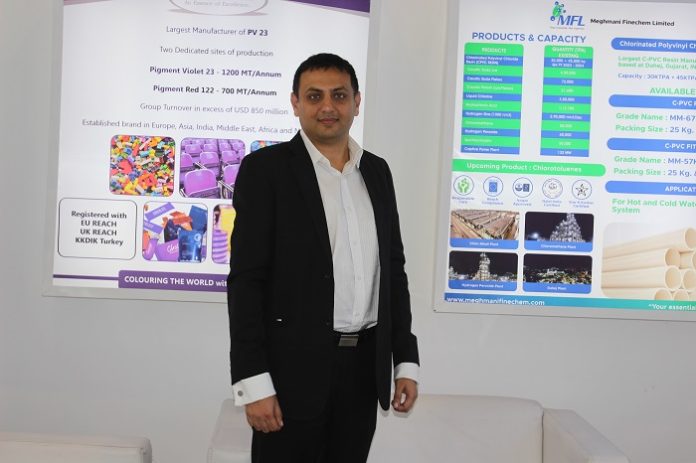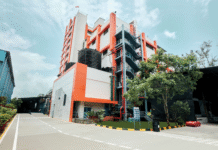
Meghmani Organics is one of the largest manufacturers of phthalocyanine pigments and high-performance pigments in India – blue, green, red, and violet. Most of the masterbatch companies are buying these pigments from Meghmani Organics, which it promoted at the PlastIndia show held from 1 – 5 February 2023 in New Delhi’s Pragati Maidan. The company also launched a Titanium dioxide plant in Dahej in Gujarat, commissioned a few days ago.
“India is practically a net importer of Titanium dioxide. There are small capacities but India has a long way to go. With the addition of this pigment, we are completing our basket from the customer-end point of view,” said Kaushal Soparkar, managing director of Meghmani Organics.
Apart from pigments, Meghmani Finechem is into manufacturing CPVC resins. “We started with a plan of 30,000 tons per annum. We are doing very well and received approvals from all customers in the pipe industry. In the next financial, our capacity will rise by an additional 45,000 tons. So, the total capacity of CPVC resins will be 75,000 tons per annum,” he said.
The pigments industry, overall, may not be doing very well at this juncture because of whatever has happened in China, and the European market. It has gone down because of the Ukraine war and other issues, he said, but in the long run, the pigments industry in India will do well because the flexible packaging and the pre-media markets are growing globally.
“India has its own growing market. Our processes and our plants are as per the global requirements. Meghmani will also have its own market share. The end market, which is flexible packaging and pre-media, also will need a reliable source in India and the government is giving indirect benefits to manufacturers. Through PLI schemes or the Make in India initiative, the government is anchoring local manufacturing. In that space, if you look at the entire spectrum, the pigment market will have a better future in the coming days,” he said.
In the pigments industry, he said, the stakeholders are focusing more on how to take care of the effluents. Earlier on, many companies never used to treat their water. According to him, the focus will be on sustainability and how to take care of the environmental load.
“From the sustainability point of view, we are going for responsible care. That’s what our focus is. We will soon follow ESG compliance. In my opinion, whoever would manage that part as per the government guidelines will be the winner,” he added.










